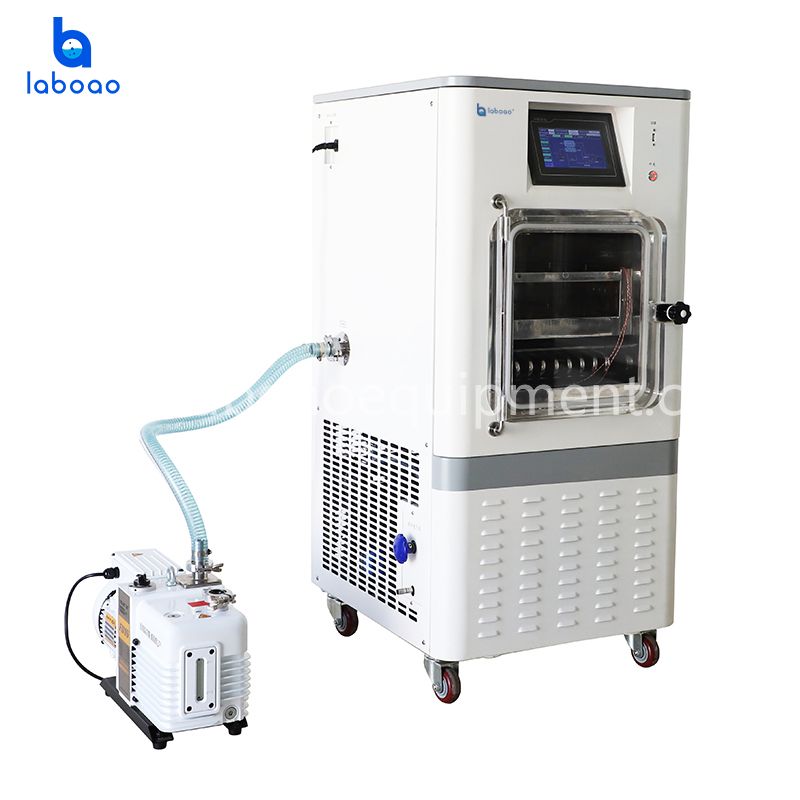How to control the pressure of the pilot freeze dryer?
First of all, let's take a look at how it works and how to prepare for it.
Before using freeze dryer, place the object to be air-dried in a low temperature refrigerator or liquid nitrogen to freeze the object and freeze-dry it. The main engine and the vacuum pump are connected with each other by a vacuum tube, and standard clamps are used at the connection. The clamp contains a sealing rubber ring. Before connecting, apply an appropriate amount of vacuum grease on the rubber ring, and then clamp it with the clamp. There is a power socket for the vacuum pump on the right side panel of the main unit, and the power cord of the vacuum pump is connected well. Check the vacuum pump to confirm that the vacuum pump oil has been filled, and it cannot be run without oil. The oil level should not be less than the center line of the oil mirror. The "o" type sealing rubber ring above the cold trap of the main unit should be kept clean. When using it for the first time, a thin layer of vacuum grease can be applied. The glass cover is placed on the rubber ring and rotated a few times, which is conducive to sealing.
There are four main methods to control the pressure of the pilot freeze dryer:
① Separation valve control: Adjust the cross-sectional area of the channel between the drying box and the water vapor condenser of the pilot-scale freeze dryer to increase the partial pressure of water vapor in the drying box
② Water vapor condenser control: Increase the temperature of the surface of the water vapor condenser to reduce the condensation capacity, resulting in an increase in the partial pressure of water vapor in the drying box
③ Small butterfly valve control: Intermittently open or close the valve between the water vapor condenser and the vacuum pump
④ Aerated: Micro-adjustment valve to control the air intake, and introduce sterile air or nitrogen into the drying box
Although the above methods can achieve the purpose of pressure control, they all have various disadvantages. The level of vacuum is directly determined by the vacuum pump. Therefore, it is recommended to start with the vacuum pump, study the variable frequency vacuum pump, and then automatically control the switch and running speed of the pump through the indoor pressure, so as to fundamentally solve the problem of pressure control. At the same time, because the power of the vacuum pump becomes smaller, the electric energy can also be saved.










-analyzer-1695623743955.jpg)

